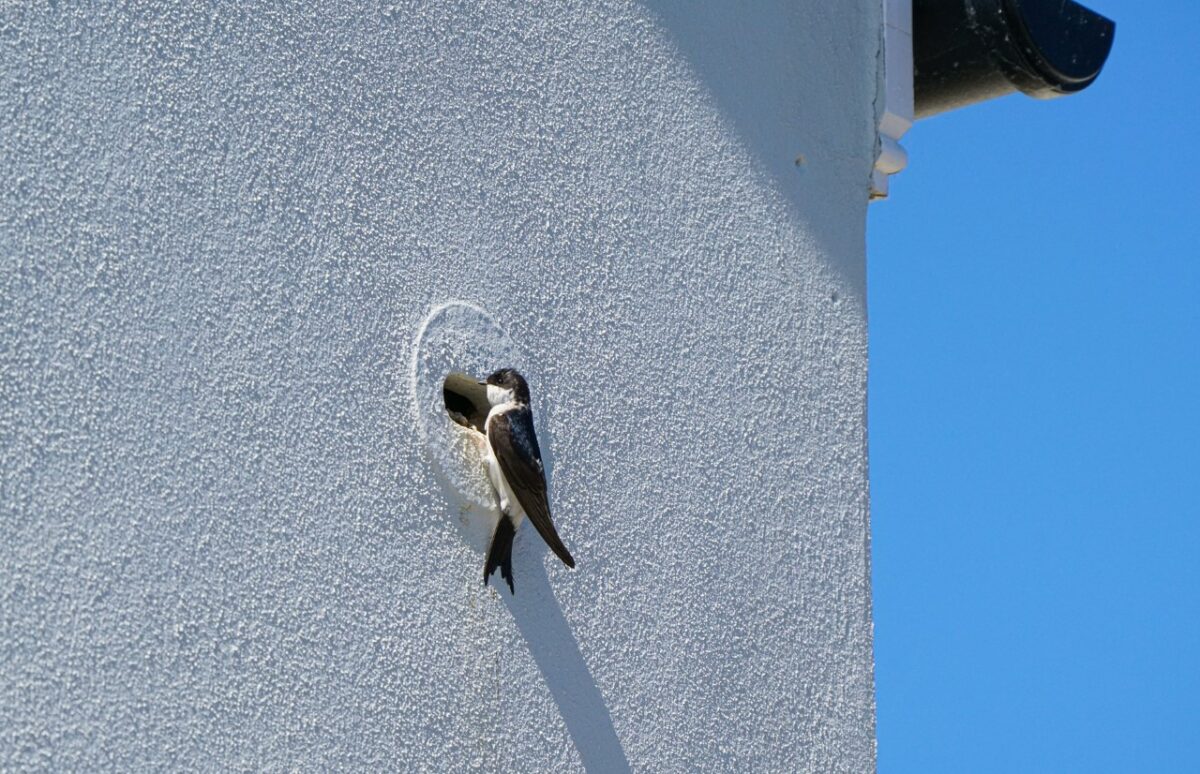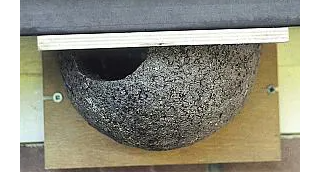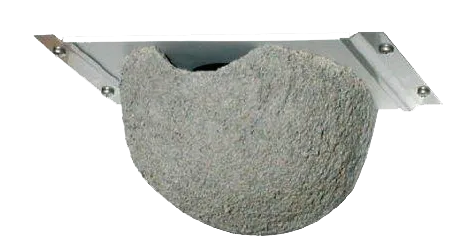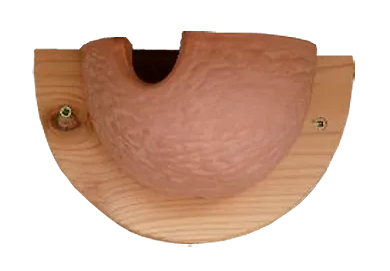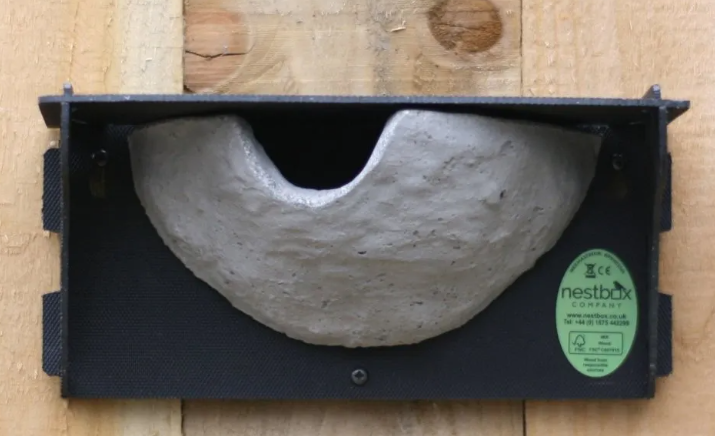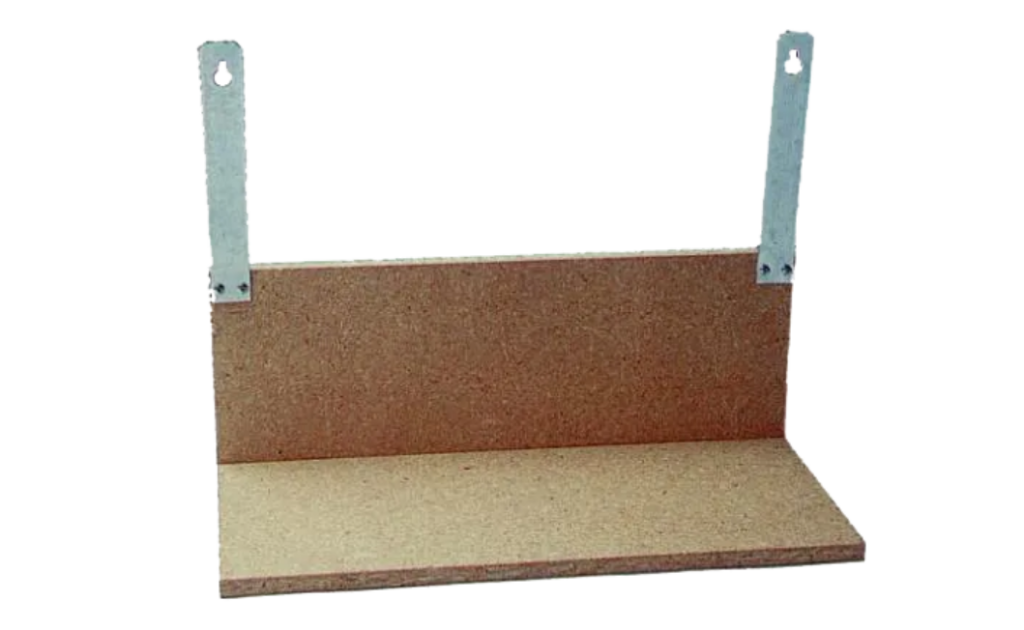Modern infrastructure has come with a host of changes to roof design, which have impacted the availability of suitable nesting sites for a number of avian species. House Martins and Swallows have been particularly affected by these changes, and we can encourage their colonisation, nesting and breeding through the provision of artificial habitats.
These birds live in colonies of around five nests constructed using spring mud, but in drier springs this can be in short supply. Gathering building materials also requires significant energy expenditure for breeding birds, removing energy available for roosting and raising young. Nest boxes provide a ready–made habitat suitable for nesting without spring mud availability.
Swallows and House Martins require a cup or bowl-shaped nest, with a small, narrow entrance and are generally made of Woodcrete/WoodStone or hard wood. They are typically placed under the external eaves of a building to mimic natural nesting locations and are best placed on a sheltered side at a minimum height of 2m above the ground. Due to their natural nesting habits, House Martin and Swallow nests are designed to be wall mounted. These birds are highly sociable and prefer to nest in colonies, so consider mounting multiple nests to further support natural behaviour.
Here we look at a selection of nest boxes suitable for House Martins and Swallows, highlighting the benefits of each design.
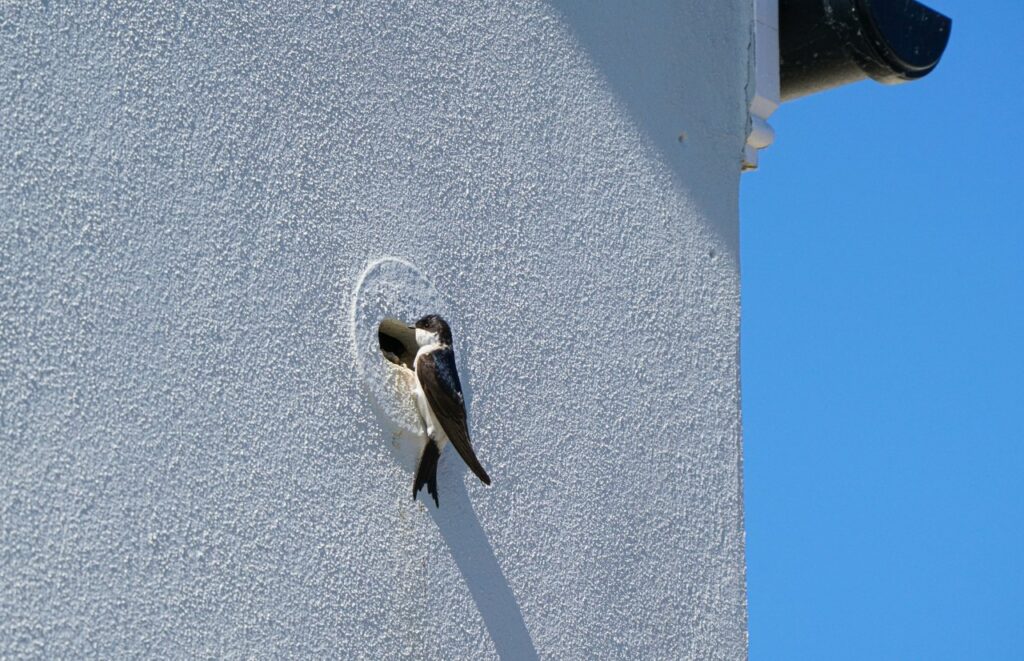
Key materials
Wooden nest boxes are preferred by many. This lightweight material is breathable and provides excellent insulation for nesting birds, helping to protect them from temperature extremes between seasons. Typically used for external boxes, harder wood types provide a fair level of robustness and longevity when at least 15mm thick and help to prevent predator access to the nest. The main drawback of wooden nests is the maintenance they require – they should be monitored to ensure the wood remains in good condition, and care taken in choosing wood treatments as many can be harmful to nesting birds.
WoodStone and Woodcrete are almost identical in composition, but Woodcrete is a patented material by Durisol. The material is made from a blend of wood and concrete to produce long-lasting, very durable boxes which can last for decades. It has good insulative properties and creates a stable environment inside the box to shelter inhabitants from extreme temperatures. This material is offered for both built-in and mounted nest boxes but is more often used for built-in boxes due to its weight, which is heavier than wood or eco-plastic. WoodStone is typically more expensive than other materials and requires thoughtful design to improve ventilation to prevent the buildup of moisture in the nest.
Certain components of a bird box may be made with eco-, or regular, plastic. A low-cost option, plastic is more lightweight than Woodcrete, and provides more longevity than wood. This weather resistant material is easy to maintain and is often sourced from recycled plastics. Nest boxes featuring eco-plastic require careful design to mitigate issues with insulation and ventilation. This material is, however, less durable and provides little resistance to predators.
Our Suggestions:
External House Martin Nest Boxes
Woodcrete/Woodstone House Martin Nest Boxes
 The nest bowl is made from wood concrete, ensuring long-lasting durability and a stable interior climate. The chipboard backing ensures easy, lightweight installation.
The nest bowl is made from wood concrete, ensuring long-lasting durability and a stable interior climate. The chipboard backing ensures easy, lightweight installation.
A WoodStone nesting box that ensures breathability, durability and temperature stability for nesting House Martins. The exterior grade plywood backing is lightweight making it easy to install, and is hard-wearing to ensure a long-lasting product.
Vivara Pro WoodStone House Martin Nest
Made with WoodStone, a mixture of FSC certified wood fibres and concrete, this House Martin nest features excellent durability and thermal properties to ensure temperature stability for nesting birds. The backing is also made with WoodStone to increase the durability of the overall unit. Double nest options are also available.
No. 13 Schwegler Modular House Martin Nest
Constructed with Woodcrete, nesting birds will benefit from air permeability and weatherproofing with a low maintenance, long-lasting design. This nest cup is uniquely mounted on a durable backing plate and rails to simplify the installation and cleaning process. Also available in a semi-finished format, allowing House Martins to complete the nest themselves which encourages natural building behaviours.
Alternative House Martin Nest Boxes
A ceramic nest bowl mounted on a wooden backing plate. Ceramics provide a breathable nesting area with good thermal properties, whilst providing a plastic-free habitat for breeding birds.
The nest cup is made from a resin-concrete mixture, mounted onto a low-density polyethylene (LDPE) backing plate made from recycled plastic waste. A plastic roof and cup drainage holes ensure a dry nest throughout the season.
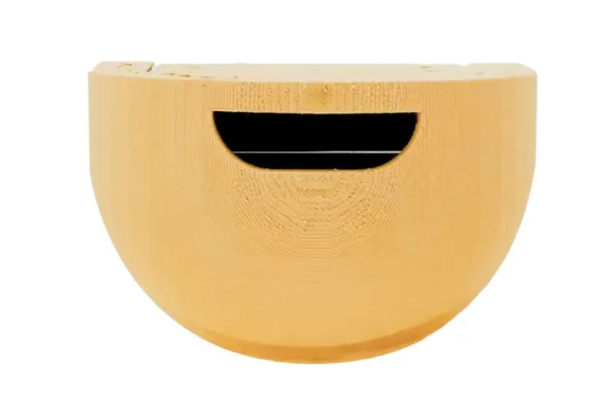
Made of a mixture of sawdust and cornstarch, this 3D printed nesting cup is fully biodegradable. The result is a durable, weather resistant habitat that is breathable, with adequate insulation for nesting birds.
Accessories for House Martin Nest Boxes
Schwegler Droppings Board for House Martin & Swallow Nests
This droppings board prevents the accumulation of droppings from Swallow and House Martin nest bowls around windows and doors. It can be quickly and easily assembled and installed using screws and is suitable for use beneath any House Martin or Swallow nest box.
For more information on bird boxes and how to choose them, find our Buyers Guides here.

